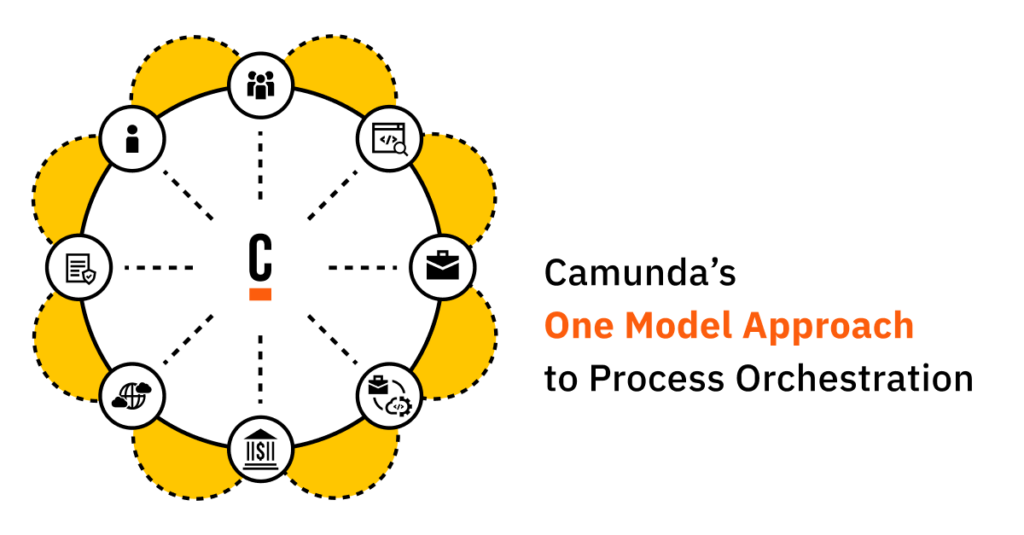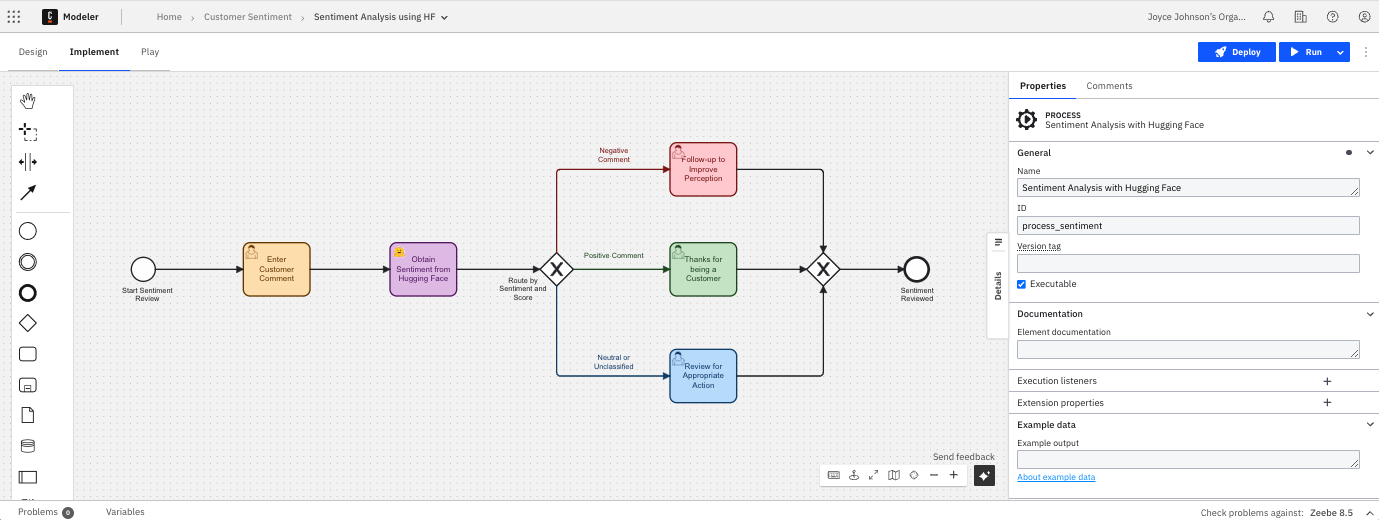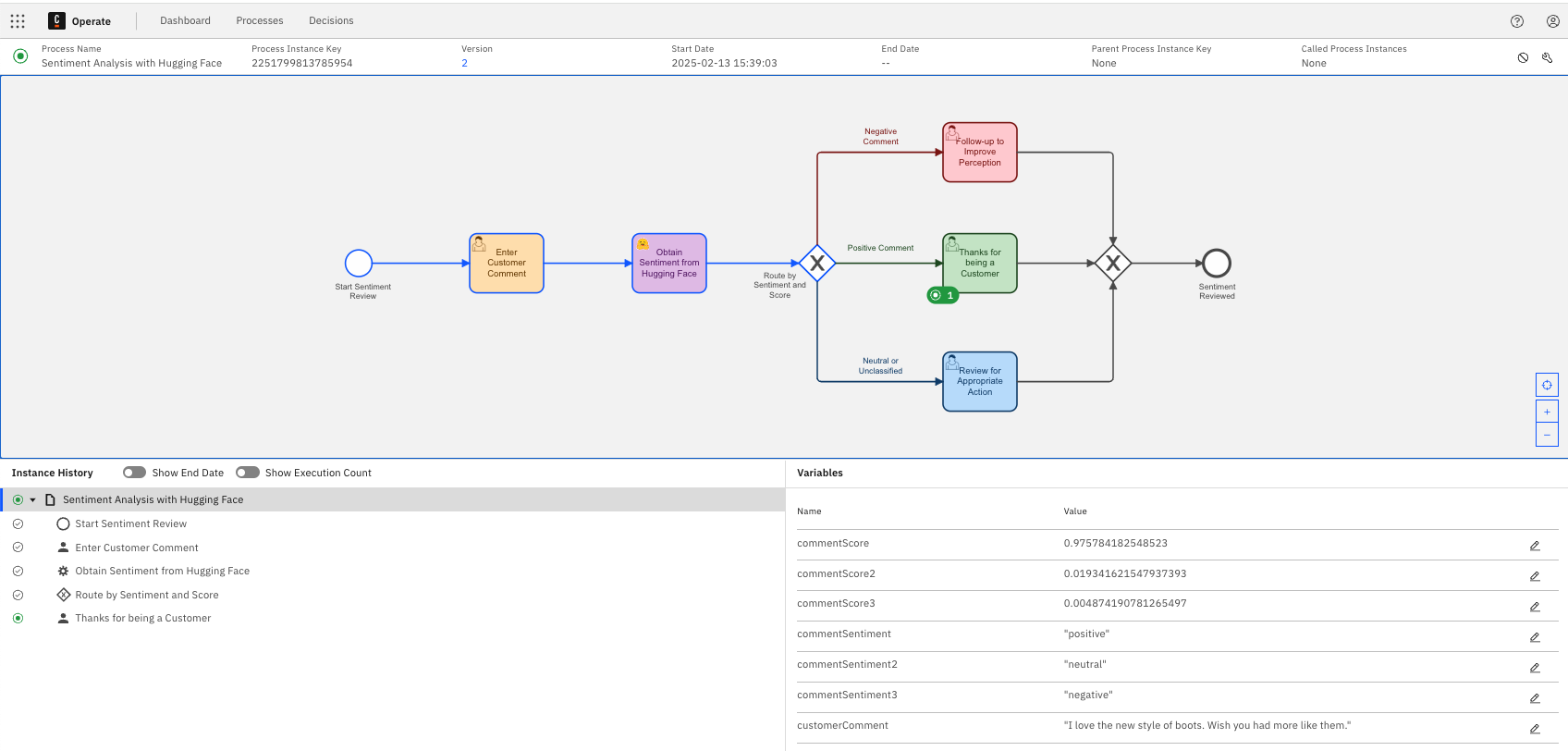Camunda, well known for its spectacular process orchestration capabilities, has a unique approach to providing visibility into your end-to-end process—a one model approach. The same model can be used by your entire organization, including developers, business analysts, information technology leaders, and executive owners for all stages of your process orchestration.
Essentially, there is no need to use a different representation of the workflow for different parts of the deployment process, from design, to monitoring and improvement.
Business process model and notation
The foundation of Camunda’s one model approach is the use of Business Process Model and Notation (BPMN), a visual language designed to represent business processes clearly and effectively. BPMN depicts processes with graphical flowcharts using a standardized set of symbols and techniques. This graphical representation allows the same model to be easily shared across the organization.
BPMN diagrams are easily understandable by individuals of all technical backgrounds. Business owners, technical teams, project managers, and business analysts can all leverage BPMN to visualize process execution, identify key participants, and determine where integrations are needed.
These diagrams strike a balance between simplicity for visualization and technical depth for execution. By using BPMN, organizations eliminate ambiguity and provide clear context for process specifications.
We will be using the following example to show how one model is used throughout Camunda’s components.
Benefits of a one model approach
There are many benefits to the organization associated with adopting this one model approach for process orchestration.
Collaboration
With a single model approach, business and IT can work collaboratively to build complex business processes using a common language. IT and developers can take that same process, and add required integration or other functionality to the same model used by the business teams. It serves as a single source of truth by using the same model for design, execution, monitoring, and analysis. This eliminates the need to toggle between different representations and ensures that all stakeholders are always working with the most up-to-date version.
Collaboration is provided with Camunda Modeler allowing users to share models with others within the organization as well as the ability to add elements and make changes to the models as a collaborator.
Enhanced visibility
In addition to supporting advanced workflow patterns, a process orchestration solution like Camunda offers full visibility into the entire end-to-end process, extending beyond the tasks performed by a single tool. Visibility with the same model simplifies discussions and analysis because you do not need to learn new tools or models to gain insight into the process.
Process execution and monitoring
This same process will be executed by Camunda’s workflow engine, Zeebe. This simplifies monitoring and troubleshooting because process execution data aligns directly with the visual model providing clear visualization of the entire process.
When monitoring running processes, users see information about process status and incidents overlaid on the same model, so they don’t have to interpret technical performance data or decipher server logs.
Monitoring an active process (see blue arrow) and tracking its history and variables
Process improvement
Reports show historical process execution data with the same visualization, including heatmaps and branch analysis, providing an intuitive way to understand process performance and possible bottlenecks. Having access to this data in the same representation used in every stage makes it easier to identify areas for optimization.
One model approach is the way to go
Camunda’s approach to the model representation ensures a consistent process model visualization across design, execution, monitoring, and optimization. With this single model, you can enhance overall collaboration throughout the organization.
This one model approach offers a holistic view of process execution data, simplifying analysis and interpretation. Process status and incident details are seamlessly integrated into the same model used during the design phase.
The complexity that comes from dealing with multiple models for multiple stakeholders, forcing frequent version confusion and reconciliation, will be increasingly untenable in a world where more and more is being automated every day (including by AI). Camunda’s “one model” approach is easier today, and it’s a powerful way to keep your automations more future-proof when things inevitably change.







Start the discussion at forum.camunda.io